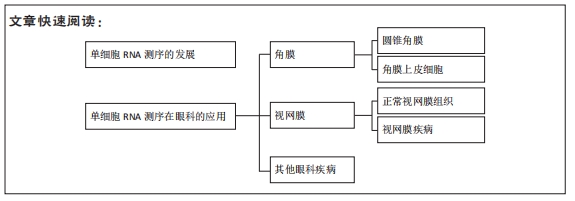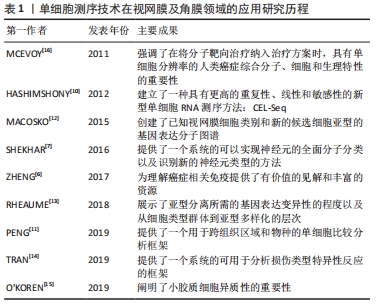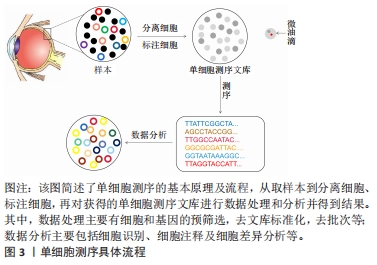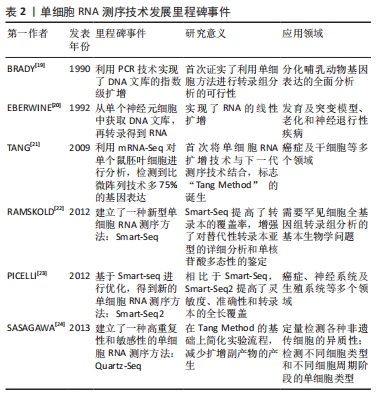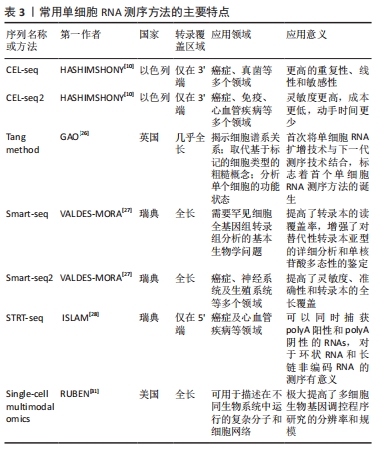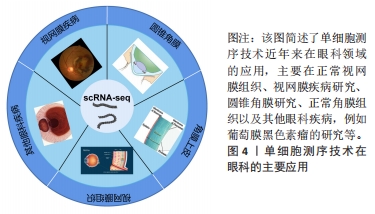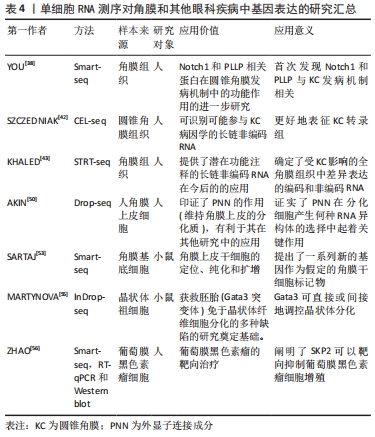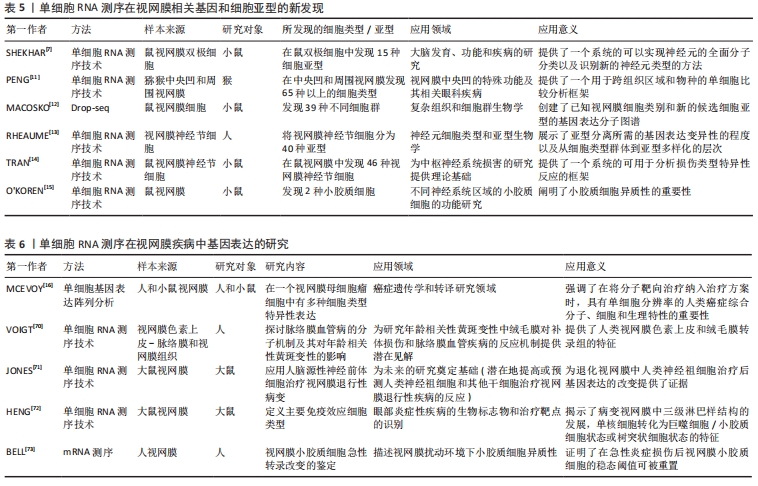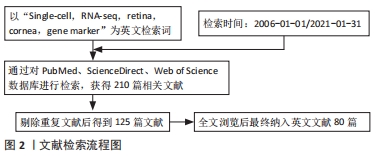[1] CHEN G, NING B, SHI T. Single-cell RNA-seq technologies and related computational data analysis. Front Genet. 2019;10:317.
[2] LIU Y, HU J, LiU D, et al. Single-cell analysis reveals immune landscape in kidneys of patients with chronic transplant rejection. Theranostics. 2020;10(19):8851-8862.
[3] DING S, CHEN X, SHEN K. Single-cell RNA sequencing in breast cancer: Understanding tumor heterogeneity and paving roads to individualized therapy. Cancer Commun. 2020;40(8):329-344.
[4] ZHANG Y, WANG D, PENG M, et al. Single-cell RNA sequencing in cancer research. J Exp Clin Cancer Res. 2021;40(1):81.
[5] SUN YF, GUO W, XU Y, et al. Circulating tumor cells from different vascular sites exhibit spatial heterogeneity in epithelial and mesenchymal composition and distinct clinical significance in hepatocellular carcinoma. Clin Cancer Res. 2018;24(3):547-559.
[6] ZHENG C, ZHENG L, YOO JK, et al. Landscape of infiltrating T cells in liver cancer revealed by single-cell sequencing. Cell. 2017;169(7):1342-1356.
[7] SEHKHAR K, LAPAN SW, WHITNEY IE, et al. Comprehensive classification of retinal bipolar neurons by single-cell transcriptomics. Cell. 2016; 166(5):1308-1323.
[8] KAPLAN N, WANG J, WRAY B, et al. Single-cell RNA transcriptome helps define the limbal/corneal epithelial stem/early transit amplifying cells and how autophagy affects this population. Invest Ophthalmol Vis Sci. 2019;60(10):3570-3583.
[9] KAMEISHI S, UMEMOTO T, MATSUZAKI Y, et al. Characterization of rabbit limbal epithelial side population cells using RNA sequencing and single-cell qRT-PCR. Biochem Biophys Res Commun. 2016;473(3):704-709.
[10] HASHIMSHONY T, WAGNER F, SHER N, et al. CEL-Seq: single-cell RNA-Seq by multiplexed linear amplification. Cell Rep. 2012;2:666-673.
[11] PENG YR, WANG Y, HERRMANN D, et al. Molecular classification and comparative taxonomics of foveal and peripheral cells in primate retina. Cell. 2019;176(5):1222-1237.
[12] MACOSKO EZ, SATIJA R, NEMESH J, et al. Highly parallel genome-wide expression profiling of individual cells using nanoliter droplets. Cell. 2015;161(5):1202-1214.
[13] Rheaume BA, Jereen A, Bolisetty M, et al. Single cell transcriptome profiling of retinal ganglion cells identifies cellular subtypes. Nat Commun. 2018;9(1):2759.
[14] TRAN NM, SHEKHAR K, WHITNEY IE, et al. Single-cell profiles of retinal ganglion cells differing in resilience to injury reveal neuroprotective genes. Neuron. 2019;104(6):1039-1055.
[15] O’KOREN EG, YU C, KLINGEBORN M, et al. Microglial function is distinct in different anatomical locations during retinal homeostasis and degeneration. Immunity. 2019;50(3):723-737.
[16] MCEVOY J, FLORES-OTERO J, ZHANG J, et al. Coexpression of normally incompatible developmental pathways in retinoblastoma genesis. Cancer Cell. 2011;20(2):260-275.
[17] HWANG B, LEE JH, BANG D. Single-cell RNA sequencing technologies and bioinformatics pipelines. Exp Mol Med. 2018;50(8):1-14.
[18] YE Y, SONG H, ZHANG J, et al. Understanding the biology and pathogenesis of the kidney by single-cell transcriptomic analysis. Kidney Dis (Basel). 2018;4(4):214-225.
[19] BRADY G, ISCOVE N. Representative in vitro cDNA amplification from individual hemopoietic cells and colonies. Methods Mol Cell Biol. 1990;2(1):17-25.
[20] EBERWINE J, MIYASHIRO K, CAO Y, et al. Analysis of gene expression in single live neurons. Proc Natl Acad Sci U S A. 1992;89(7):3010-3014.
[21] TANG F, WANG Y, NORDMAN E, et al. mRNA-Seq whole-transcriptome analysis of a single cell. Nat Methods. 2009;6(5):377-382.
[22] RAMSKOLD D, WANG YC, LI R, et al. Full-length mRNA-Seq from single-cell levels of RNA and individual circulating tumor cells. Nat Biotechnol. 2012;38(3):374.
[23] PICELLI S, BJORKLUND AK, WINBERG G, et al. Full-length RNA-seq from single cells using Smart-seq2. Nat Protoc. 2012;9(1):171-181.
[24] SASAGAWA Y, HAYASHIT, DANNO H, et al. Quartz-Seq: a highly reproducible and sensitive single-cell RNA sequencing method, reveals non-genetic gene-expression heterogeneity. Genome Biol. 2013;14(4):31.
[25] SEE P, CHEN J, GINHOUX F. A single-cell sequencing guide for immunologists. Front Immunol. 2018;9:2425.
[26] GAO S. Data analysis in single-cell transcriptome sequencing. Methods Mol Biol. 2018;1754:311-326.
[27] VALDES-MORA F, HANDLER K, LAW AMK, et al. Single-cell transcriptomics in cancer immunobiology: the future of precision oncology. Front Immunol. 2018;9:2582.
[28] ISLAM S, MOLINER A, ZAJAC P, et al. Highly multiplexed and strand-specific single-cell RNA 5’end sequencing. Nat Protoc. 2012;7(5):813-828.
[29] HASHIMSHONY T, SENDEROVICH N, AVITAL G, et al. CEL-Seq2: sensitive highly-multiplexed single-cell RNA-Seq. Genome Biol. 2016;17:77.
[30] Method of the Year 2019: single-cell multimodal omics. Nat Methods. 2020;17(1):1.
[31] RUBEN M, DALIA B, FLORIAN W, et al. Integrating microarray-based spatial transcriptomics and single-cell RNA-seq reveals tissue architecture in pancreatic ductal adenocarcinomas. Nat Biotech. 2020;38(3):333-342.
[32] SKORCZYK-WERNER A, CHIANG WC, WAWROCKA A, et al. Autosomal recessive cone-rod dystrophy can be caused by mutations in the ATF6 gene. Eur J Hum Genet. 2017;25(11):1210-1216.
[33] LEE EJ, CHIANG WJ, KROEGER H, et al. Multiexon deletion alleles of ATF6 linked to achromatopsia. JCI Insight. 2020. doi:10.1172/jci.insight.136041.
[34] YOU J, HODGE C, WEN L, et al. Tear levels of SFRP1 are significantly reduced in keratoconus patients. Mol Vis. 2013;19:509.
[35] HAYES S, BOOTE C, TUFY SJ, et al. A study of corneal thickness, shape and collagen organisation in keratoconus using videokeratography and X-ray scattering techniques. Exp Eye Res. 2007;84(3):423-434.
[36] KANDEL H, PESUDOVSK, WATSON SL. Measurement of quality of life in keratoconus. Cornea. 2020;39(3):386-393.
[37] FERRARI G, RAMA P. The keratoconus enigma: a review with emphasis on pathogenesis. Ocul Surf. 2020;18(3):363-373.
[38] YOU J, CORLEY SM, WEN L, et al. RNA-Seq analysis and comparison of corneal epithelium in keratoconus and myopia patients. Sci Rep. 2018; 8(1):389.
[39] NAJMI H, MOBARKI Y, MANIA K, et al. The correlation between keratoconus and eye rubbing: a review. Int J Ophthalmol. 2019;12(11):1775-1781.
[40] BYKHOVSKAYA Y, RABINOWITA YS. Update on the genetics of keratoconus. Exp Eye Res. 2021;202:108398.
[41] SLOVIN S, CARISSIMO A, PANARIELLO F, et al. Single-cell rna sequencing analysis:a step-by-step overview. Methods Mol Biol. 2021;2284:343-365.
[42] SZCZESNIAK MW, KABZA M, KAROLAK JA, et al. KTCNlncDB-a first platform to investigate lncRNAs expressed in human keratoconus and non-keratoconus corneas. Database. 2017. doi:10.1093/database/baw168.
[43] KHALED ML, BYKHOVSKAYA Y, YABLONSKI SER, et al. Differential expression of coding and long noncoding rnas in keratoconus-affected corneas. Invest Ophthalmol Vis Sci. 2018;59(7):2717-2728.
[44] SHETTY R, SATHYANARAYANAMOORTHY A, RAMACHANDRA RA, et al. Attenuation of lysyl oxidase and collagen gene expression in keratoconus patient corneal epithelium corresponds to disease severity. Mol Vis. 2015;21:12-25.
[45] MERCER TR, GERHARDT DJ, DINGER ME, et al. Targeted RNA sequencing reveals the deep complexity of the human transcriptome. Nat Biotechnol. 2011;30(1):99-104.
[46] PERTEA M, PERTEA GM, ANTONESCU CM, et al. StringTie enables improved reconstruction of a transcriptome from RNA-seq reads. Nat Biotechnol. 2015;33(3):290-295.
[47] BHENDE SD, VaARANASI MB, ABBULU K. A sensitive HPTLC method for the estimation of glibenclamide, rosiglitazone maleate and metformin hydrochloride from a multicomponent dosage form. J Chromatogr Sci. 2020;58(5):418-426.
[48] MANABE A, FURUKAWA C, HASEGAWA H, et al. Upregulation of transient receptor potential melastatin 6 channel expression by rosiglitazone and all-trans-retinoic acid in erlotinib-treated renal tubular epithelial cells. J Cell Physiol. 2019;234(6):8951-8962.
[49] NOTARA M, SHORTT AJ, O’CALAGHAN AR, et al. The impact of age on the physical and cellular properties of the human limbal stem cell niche. Age. 2013;35(2):289-300.
[50] AKIN D, NEWMAN JR, MCINTYRE LM, et al. RNA-seq analysis of impact of PNN on gene expression and alternative splicing in corneal epithelial cells. Mol Vis. 2016;22:40-60.
[51] TANG T, YANG L, CAO Y, et al. LncRNA AATBC regulates Pinin to promote metastasis in nasopharyngeal carcinoma. Mol Oncol. 2020;14(9):2251-2270.
[52] OKUNURA N, KAY EP, NAKAHARA M, et al. Inhibition of TGF-β signaling enables human corneal endothelial cell expansion in vitro for use in regenerative medicine. PLoS One. 2013;8(2):e58000.
[53] SARTAJ R, ZHANG C, WAN P, et al. Characterization of slow cycling corneal limbal epithelial cells identifies putative stem cell markers. Sci Rep. 2017;7(1):3793.
[54] DENG SX, LEE WB, HAMMERSMIT KM, et al. Descemet membrane endothelial keratoplasty: safety and outcomes: a report by the american academy of ophthalmology. Ophthalmology. 2018;125(2):295-310.
[55] MARTYNOVA E, ZHAO Y, XIE Q, et al. Transcriptomic analysis and novel insights into lens fibre cell differentiation regulated by Gata3. Open Biol. 2019;9(12):190220.
[56] ZHAO H, PAN H, WANG H, et al. SKP2 targeted inhibition suppresses human uveal melanoma progression by blocking ubiquitylation of p27. Onco Targets Ther. 2019;12:4297-4308.
[57] MAYER S, VELMESHEV D, MAYER A, et al. Multimodal single-cell analysis reveals physiological maturation in the developing human neocortex. Neuron. 2019;102(1):143-158.
[58] LIANG Q, OWEN L, SHAKOOR A, et al. Single-nuclei RNA-seq on human retinal tissue provides improved transcriptome profiling. Nat Commun. 2019;10(1):5743.
[59] HARSHINI C, VASUDHARANI D. Molecular mechanisms mediating diabetic retinal neurodegeneration: potential research avenues and therapeutic targets. J Mol Neurosci. 2018;66(3):445-461.
[60] TANG F, BARBACIORU C, BAO S, et al. Tracing the derivation of embryonic stem cells from the inner cell mass by single-cell RNA-Seq analysis. Cell Stem Cell. 2010;6(5):468-478.
[61] PAPALEXI E, SATIJA R. Single-cell RNA sequencing to explore immune cell heterogeneity. Nat Rev Immunol. 2018;18(1):35-45.
[62] MASLAND RH. The neuronal organization of the retina. Neuron. 2012; 76(2):266-280.
[63] HARTL D, KREBS AR, JUTTNER J, et al. Cis-regulatory landscapes of four cell types of the retina. Nucleic Acids Res. 2017;45(20):11607-11621.
[64] POTTER SS. Single-cell RNA sequencing for the study of development, physiology and disease. Nat Rev Nephrol. 2018;14(8):479-492.
[65] LIEVENS B, HALLSWORTH JE, POZO MI, et al. Microbiology of sugar-rich environments:diversity, ecology and system constraints. Environ Microbiol. 2015;17(2):278-298.
[66] DHARMAT R, KIM S, LI Y, et al. Single-cell capture, RNA-seq, and transcriptome analysis from the neural retina. Methods Mol Biol. 2020; 2092:159-186.
[67] JOSHUA R, RICHARD H, MASLAND. The types of retinal ganglion cells: current status and implications for neuronal classification. Annu Rev Neurosci. 2015;38:221-246.
[68] BADEN T, BERENS P, FRANKE K, et al. The functional diversity of retinal ganglion cells in the mouse. Nature. 2016;529(7586):345-350.
[69] NEWMAN AM, GALLO NB, HANCOX LS, et al. Systems-level analysis of age-related macular degeneration reveals global biomarkers and phenotype-specific functional networks. Genome Med. 2012;4(2):16.
[70] VOIGT AP, MULFAUL K, MULLIN NK, et al. Single-cell transcriptomics of the human retinal pigment epithelium and choroid in health and macular degeneration. Proc Natl Acad Sci U S A. 2019;116(48):24100-24107.
[71] JONES MK, LU B, SAHIZADEH M, et al. Gene expression changes in the retina following subretinal injection of human neural progenitor cells into a rodent model for retinal degeneration. Mol Vis. 2016;22:472-490.
[72] HENG JS, HACKETT SF, STEIN-O’BRIEN GL, et al. Comprehensive analysis of a mouse model of spontaneous uveoretinitis using single-cell RNA sequencing. Proc Natl Acad Sci. 2019;116(52):26734-26744.
[73] BELL OH, COPLAND DA, WARD A, et al. Single eye mRNA-Seq reveals normalisation of the retinal microglial transcriptome following acute inflammation. Front Immunol. 2019;10:3033.
[74] YOUNG MD, WAKEFILED MJ, SMYTH GK, et al. Gene ontology analysis for RNA-seq: accounting for selection bias. Genome Biol. 2010;11(2):R14.
[75] Durante MA, Rodriguez DA, Kurtenbach S, et al. Single-cell analysis reveals new evolutionary complexity in uveal melanoma. Nat Commun. 2020;11(1):496.
[76] BULLARD JH, PUEDOM E, HANSEN KD, et al. Evaluation of statistical methods for normalization and differential expression in mRNA-Seq experiments. BMC Bioinformatics. 2010;11:94.
[77] CHEN G, LI R, SHI L, et al. Revealing the missing expressed genes beyond the human reference genome by RNA-Seq. BMC Genomics. 2011;12:590.
[78] PENG Z, CHENG Y, TAN BC, et al. Comprehensive analysis of RNA-Seq data reveals extensive RNA editing in a human transcriptome. Nat Biotechnol. 2012;30(3):253-260.
[79] GORDON-SHAAG A, MILLODOT M, SHNEOR E, et al. The genetic and environmental factors for keratoconus. Biomed Res Int. 2015; 2015:795738.
[80] KARAMICHOS D, ZIESKE JD, SEJERSEN H, et al. Tear metabolite changes in keratoconus. Exp Eye Res. 2015;132:1-8.
|
